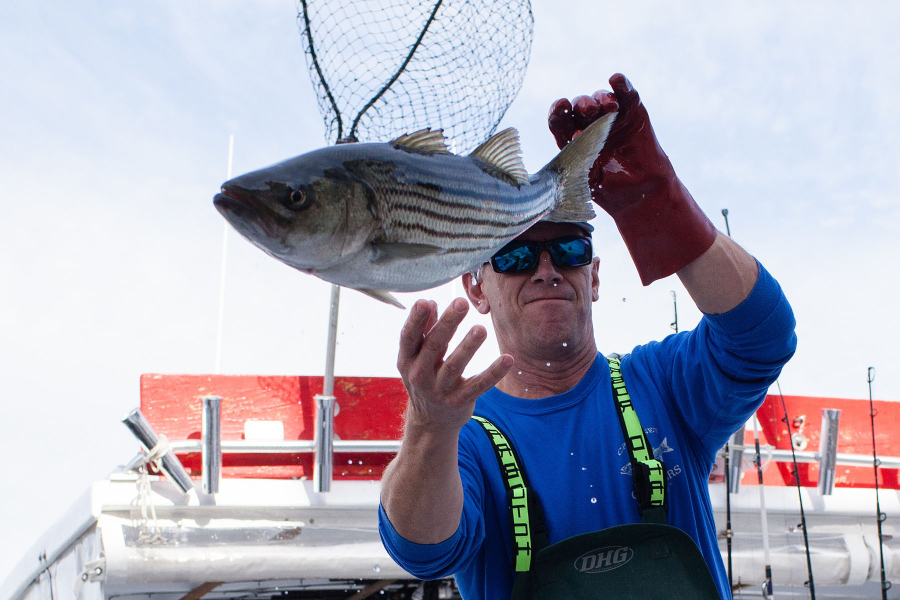A hopeful recovery for striped bass
After sharp declines in the 1970s and 80s, striped bass populations rebound

Captain Pete Ide throws a freshly caught striped bass onto the dock in Chesapeake Beach, Maryland, after a charter fishing excursion on the Chesapeake Bay on November 11, 2016.
For hundreds of years, striped bass—also known as rockfish or stripers—have been one of the most popular commercial and recreational fish in the Chesapeake Bay, which is the largest striped bass nursery area on the Atlantic coast. Experts estimate that up to 90 percent of the Atlantic striped bass population uses the Bay and its tidal tributaries to spawn.
In the early 1970s, the striped bass industry experienced record-high catches: in 1973, the commercial fishery landed 14.7 million pounds. But in the years that followed, commercial and recreational catches declined steeply, and by 1983, the harvest had fallen to just 1.7 million pounds. Scientists attributed the sharp decline primarily to overfishing, which may have made the striped bass more susceptible to stressors like changes in water temperature, low dissolved oxygen, chemical contaminants and poor water quality.
After fishing moratoria throughout the late 1980s in Delaware, Maryland and Virginia, the Chesapeake Bay striped bass fishery re-opened in 1990. Since then, striped bass abundance in the Bay has dramatically increased. According to the Atlantic States Marine Fisheries Commission, in 2015, the biomass of adult female striped bass along the Atlantic Coast was estimated to be 129 million pounds—above the overfishing threshold of 127 million but below the target of 159 million pounds. And while results of Maryland’s 2016 juvenile striped bass survey were well below the long-term average, scientists expect successful spawning years in 2011 and 2015 to compensate for the below-average year.
Learn more about striped bass in the Chesapeake Bay.

Comments
i love this article
I would like to pick up trash
Hello. I would like to collaborate collecting garbage so that the bay is kept clean.
I love striped bass.
There are small, simple things you can do everyday that impacts the Bay. You can make sure to recycle, pick up after your dog outside if you have one, you can ask your family to avoid using fertilizers or pesticides that are not environmentally-friendly or start composting at home. We have a lot of other helpful tips and tricks on our website-- https://www.chesapeakebay.net/action/howtotips.
You can also get involved with local watershed organizations in your area and volunteer to help out by planting trees or picking up trash. You can find the groups closest to where you live here--https://www.chesapeakebay.net/action/join and see what events are happening on our calendar (we have a lot of virtual ones as well at this time!)-- https://www.chesapeakebay.net/action/attend.
hii this is so cool
hi my name is trinity and i was wondering like how we could help the chesapeake bay ,
good job guys
Thank you!
Your comment has been received. Before it can be published, the comment will be reviewed by our team to ensure it adheres with our rules of engagement.
Back to recent stories